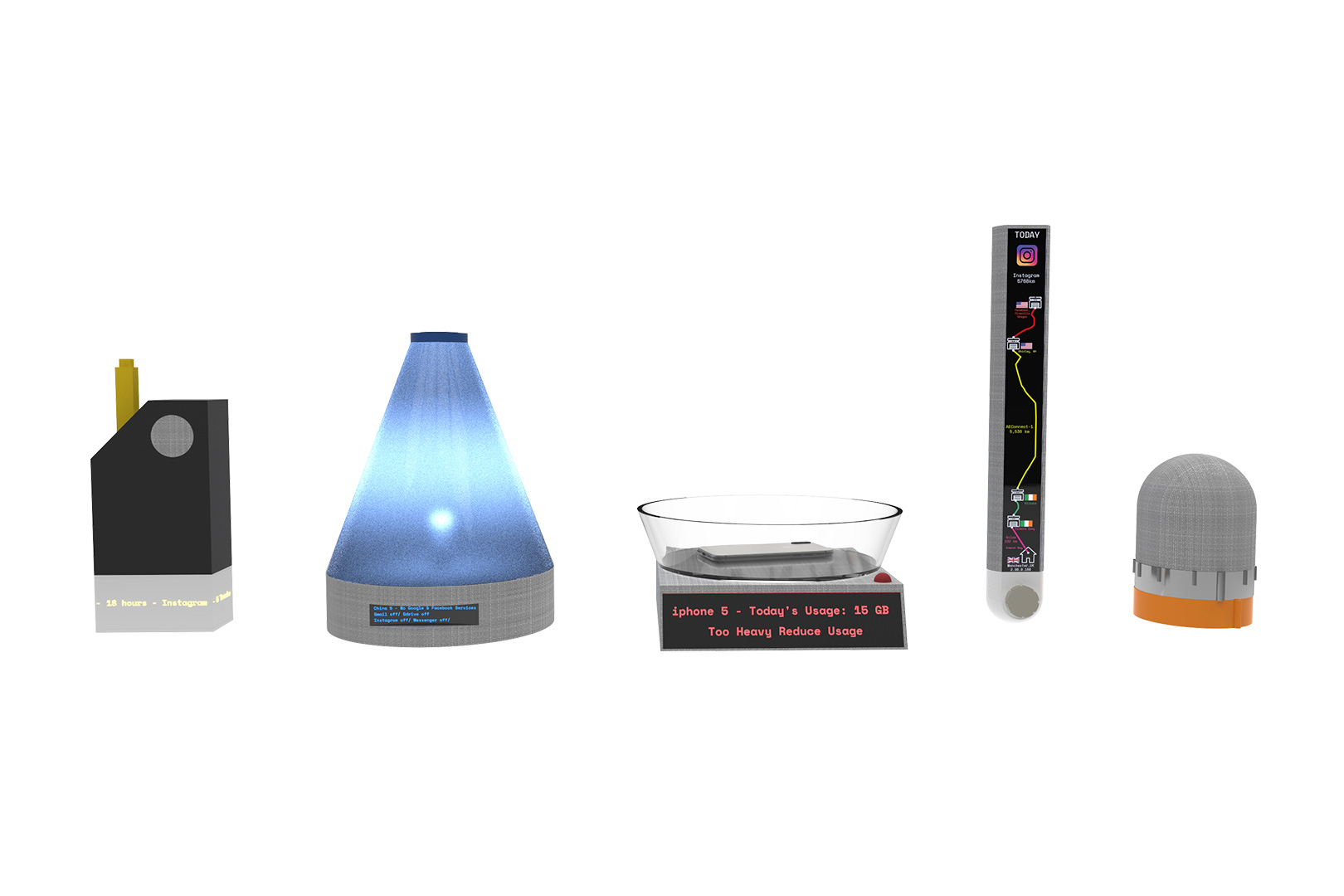‘Cached Household’ is a series of connected home devices that replace and expand the functionality of a WiFi router to teach us about the internet in a creative, tangible, and accessible way. 
‘Cached Household’ is a series of connected home devices that replace and expand the functionality of a WiFi router to teach us about the internet in a creative, tangible, and accessible way. 
Not only has the COVID-19 pandemic disrupted the lives of many people, it has also highlighted problems with the systems we take for granted, from privacy issues found on video calling platforms, to rising levels of fatigue due to online work or learning. With many people spending more time at home we are shifting the way we work, socialise and even entertain ourselves. As we rapidly develop online connectivity skills, we would benefit from a better understanding of the tools that inhabit our homes and enable such communications in the first place. In other words, what can we do to improve rather than further complicate our online use now and in the future?
In our last project ‘The Cached Experience’ we took a physical approach to personal digital data in the form of an immersive audiovisual experience powered by the IBM Watson psychometric algorithm, to illustrate just how your activities online contribute to the way in which machines see you. We wanted to offer people a user-friendly wake-up call; to critically think about the reflection their personal online behaviours cast.
Based on the inherent contradiction of our collective pandemic experiences—where we have been at home isolating, while simultaneously connected 24/7—we would like to reveal our use and misuse of the internet in our own spaces and lives, as well as shed light on how this (mis)implementation may play a part in our future social interactions.
We started by examining how devices like routers can know a lot about our digital habits by mediating our frequent connections to the online space; yet knowing how a router works is too obscure for many people. We studied the many variations of the smart home devices such as ‘Amazon Smart Home’ and ‘Google Nest’ products, which include everything from wireless routers to thermostats and doorbells. Many of the devices rely on their connectivity in similar ways, and in the course of completing their normal functions, are designed to clandestinely execute hidden functions especially when dealing with user data.
